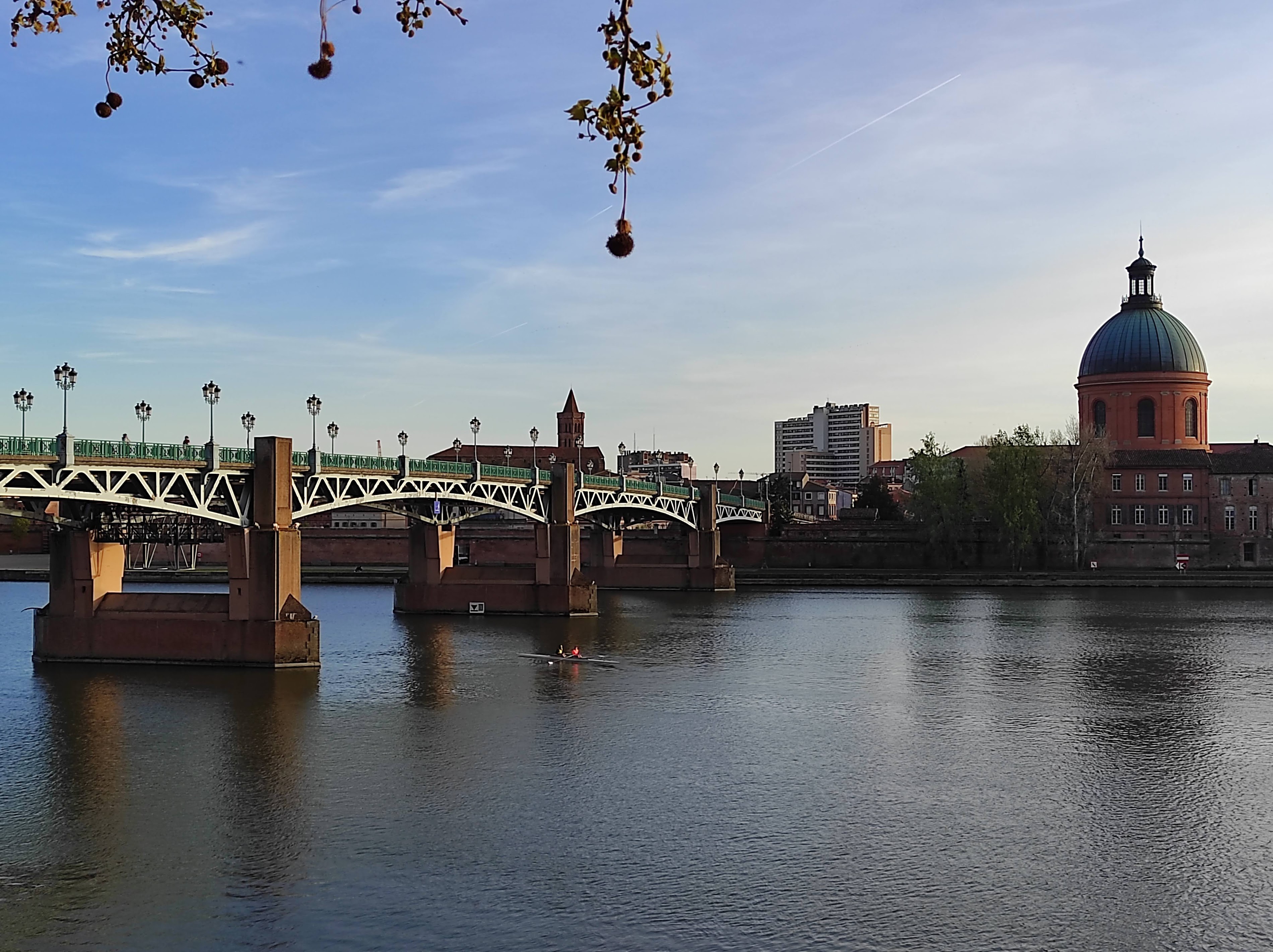Pont Saint-Pierre: A Timeless Connection Across the Garonne
Toulouse, the vibrant capital of France's Occitanie region, is a city where history and modernity intertwine seamlessly. Among its many architectural gems, the Pont Saint-Pierre stands as a testament to the city's rich heritage and enduring spirit. This iconic bridge, spanning the majestic Garonne River, has been a vital link between the historic center and the Saint-Cyprien district for over a century, serving as both a functional crossing and a beloved landmark.

A Bridge Steeped in History
The story of Pont Saint-Pierre can be traced back to the late 19th century. The need for a new bridge was recognized as Toulouse expanded and the existing crossings became insufficient to handle the growing traffic. Construction began in 1847, and the bridge was officially opened to the public in 1852.
The original structure was designed by the renowned engineer Paul Séjourné, who was known for his innovative techniques in bridge construction. Séjourné's design featured a graceful arch structure that not only provided stability but also added to the aesthetic appeal of the cityscape.
Things to do in Toulouse
Architectural Marvel
Pont Saint-Pierre's architecture is a harmonious blend of function and form. The bridge spans 245 meters across the Garonne, supported by three elegant arches. The central arch, with its impressive 46-meter span, is particularly noteworthy. The bridge's stone construction gives it a timeless quality, while the decorative elements, such as the ornate lampposts and balustrades, add a touch of Toulousain charm.
From the bridge, panoramic views of the city are offered. To the north, the iconic Pont Neuf can be glimpsed, while to the south, the dome of the Hôpital de La Grave stands proudly on the horizon. These vistas have made Pont Saint-Pierre a favorite spot for both locals and visitors alike, particularly during the golden hours of sunrise and sunset.
A Symbol of Resilience
Throughout its history, Pont Saint-Pierre has faced numerous challenges. During World War II, the bridge was partially destroyed to slow the advance of German forces. However, the people of Toulouse rallied together, and the bridge was swiftly rebuilt, becoming a symbol of the city's resilience and determination.
In more recent years, the bridge has undergone several renovations to ensure its structural integrity and preserve its historic character. These efforts have allowed Pont Saint-Pierre to continue serving its vital role in Toulouse's transportation network while maintaining its status as a cherished landmark.
A Bridge for All Seasons
Today, Pont Saint-Pierre is more than just a means of crossing the Garonne; it's an integral part of Toulouse's social fabric. On warm summer evenings, couples can be seen strolling hand in hand along its length, while cyclists and joggers make use of its dedicated lanes. During festivals and celebrations, the bridge is often festooned with lights and decorations, becoming a focal point for the city's jubilant atmosphere.
The bridge also plays a role in Toulouse's burgeoning art scene. Street performers often set up along its span, their music and performances adding to the vibrant ambiance. Additionally, the bridge has been featured in countless photographs and paintings, its graceful silhouette serving as a muse for artists from around the world.
A Gateway to Toulouse's Heritage
For visitors to Toulouse, Pont Saint-Pierre serves as an excellent starting point for exploring the city's rich history and culture. From the bridge, it's a short walk to many of Toulouse's most famous landmarks, including the Basilique Saint-Sernin, one of the largest Romanesque churches in Europe.
As you cross Pont Saint-Pierre, you're not just traversing a river; you're stepping into the heart of Toulouse's story. This elegant bridge, with its enduring beauty and historical significance, continues to be a beloved symbol of the Pink City, connecting its past to its vibrant present and promising future.
After exploring Pont Saint-Pierre, visitors might want to continue their journey through Toulouse's rich architectural heritage. A short distance away, the Square Charles de Gaulle offers another glimpse into the city's captivating history and urban design. This charming square, with its ornate fountains and lush greenery, provides a perfect spot for relaxation and reflection, embodying the essence of Toulouse's laid-back southern French lifestyle.

 Home
Home Wishlist
Wishlist